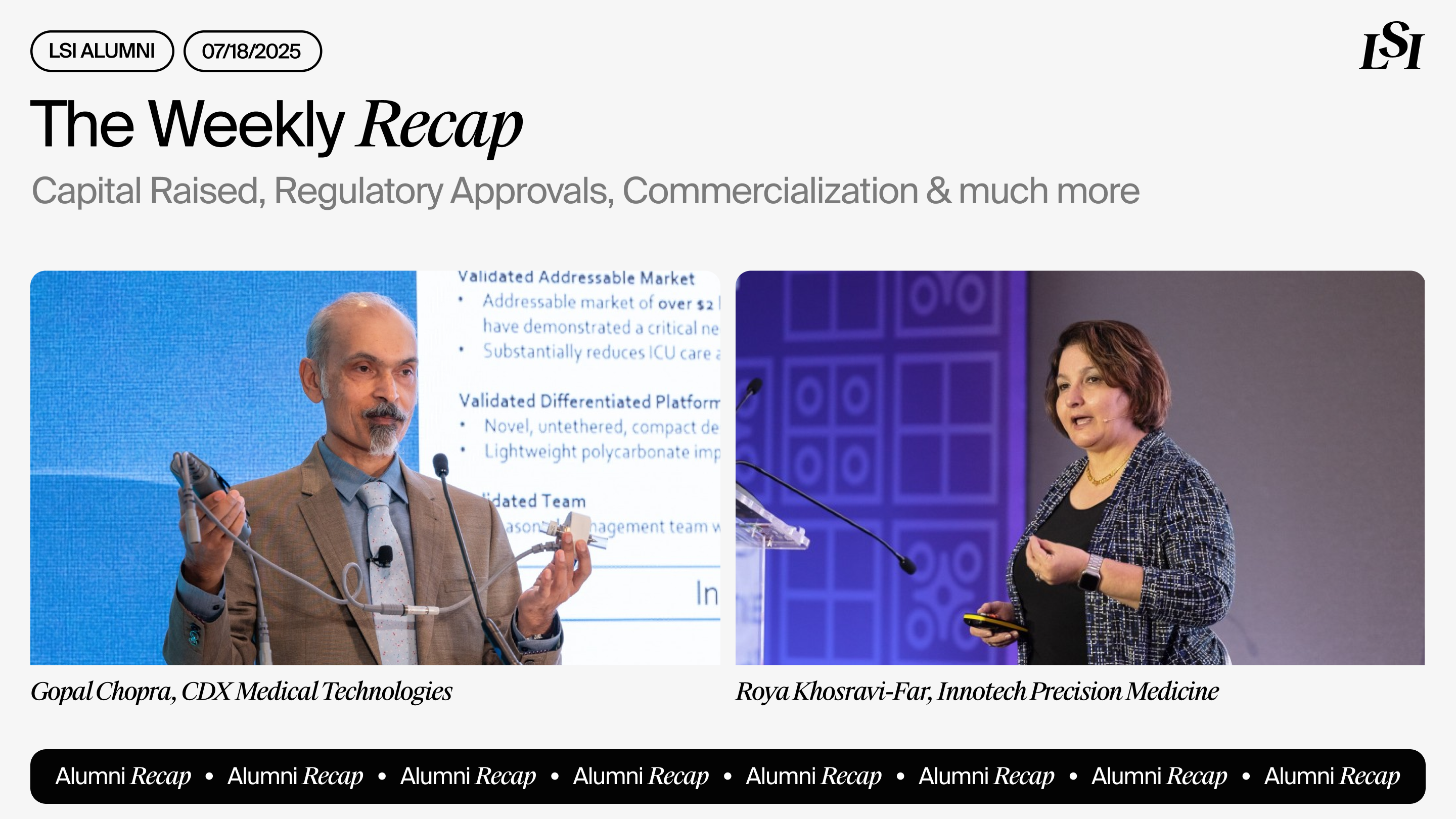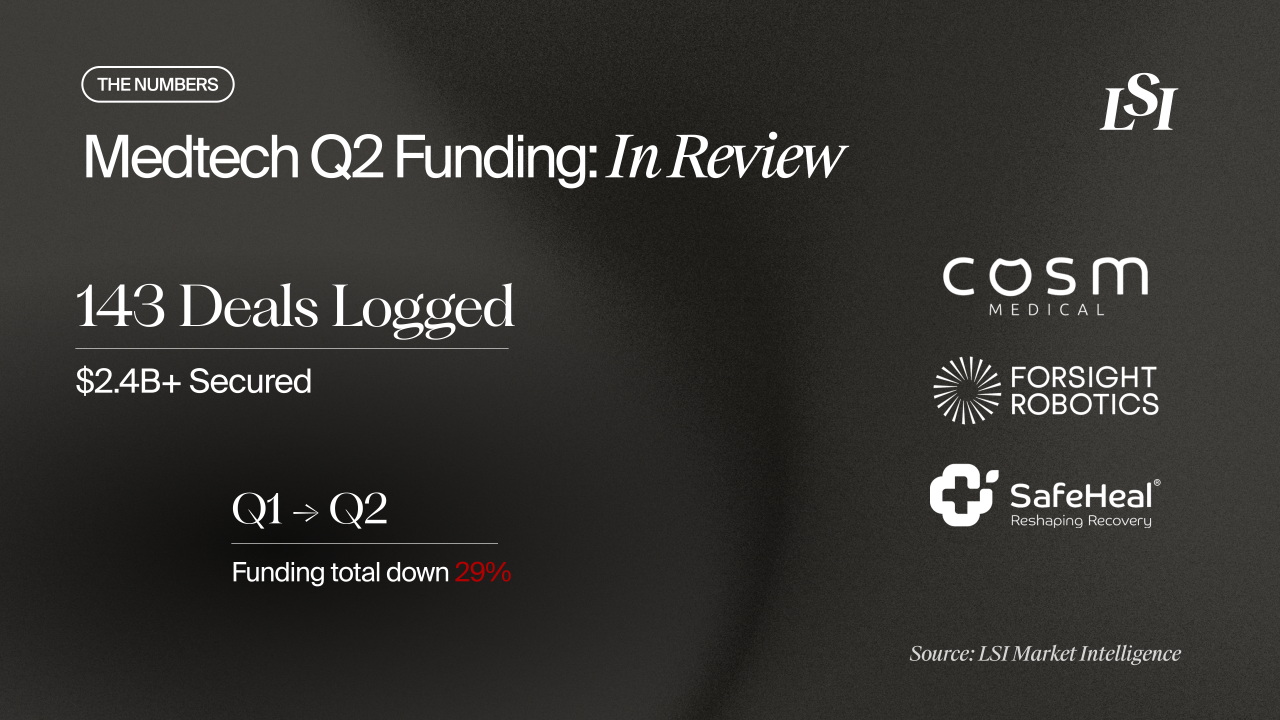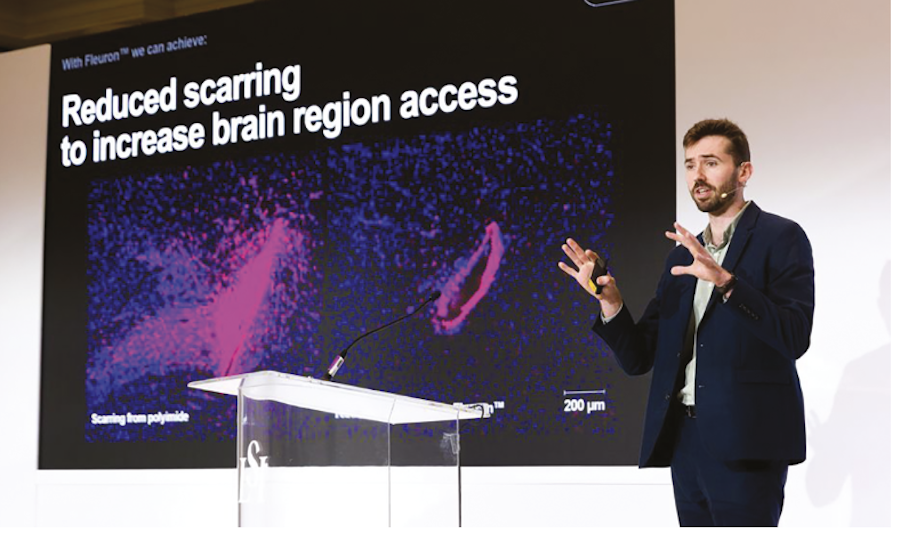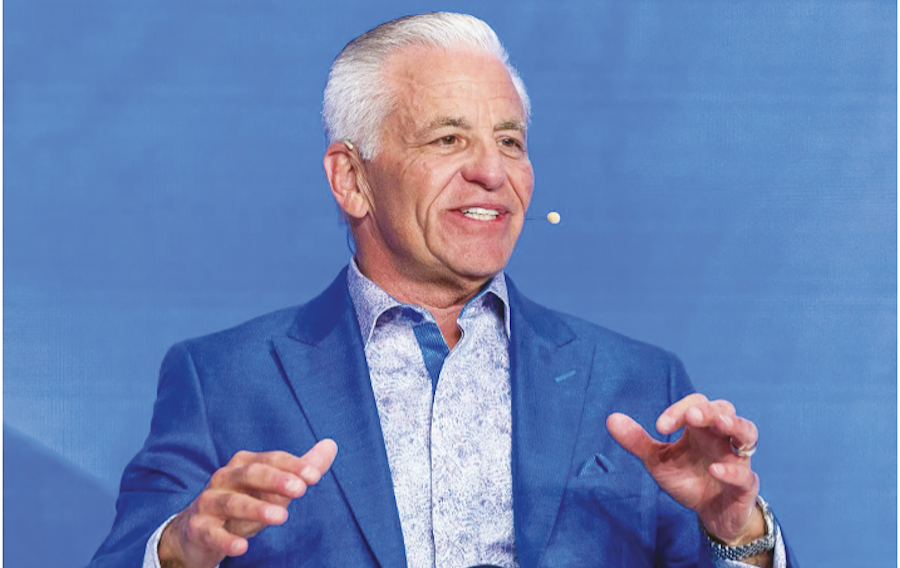
The Barcelona-based medical device startup, led by Co-Founder & CEO Jordi Martorell, is on a mission to change the paradigm of aortic disease management with its advanced biomaterials and cutting-edge technology.
Origin Story
Amid his work as Head of the Vascular Engineering and Applied Biomedicine Group at IQS Barcelona, Jordi Martorell, and his team identified a critical unmet need in the treatment of vascular diseases. This realization, combined with his team's expertise in biomaterials that promote cell growth, particularly in endothelial tissues lining arteries, sparked the inception of Aortyx. "We identified a significant unmet medical need in treating aortic dissection," Martorell explains. "With our expertise in biomaterials that promote cell growth, it was a natural connection to address this issue."
Based in Barcelona, the company now comprises a dedicated team of nearly 20 people. The interdisciplinary team's expertise in biomaterials and aortic surgery has been crucial in developing a family of biomimetic, bioresorbable endovascular patches that are deployed via a specialized aortic catheter.
The Current Landscape
Aortic dissection, a life-threatening condition involving a tear in the aortic wall, is currently treated through a few methods, each with significant limitations. The current standard of care includes three primary options, outlined by Matorell:
Open Repair: This invasive procedure involves opening the chest, cooling the body to 22 degrees Celsius, and replacing the damaged artery. Despite its invasiveness and high mortality rate, it remains the most common treatment, accounting for 60% of cases. "We still open up the chest of patients and perform highly invasive surgery, which has a mortality rate of up to 30%," explains Martorell.
Endovascular Solutions: This less invasive method uses a catheter-based grafted stent to repair the aorta. However, it is only suitable for about 13% of patients due to its limitations and secondary effects. "Endovascular solutions have lower mortality but suffer from low eligibility and numerous long-term complications," Martorell adds.
Medical Therapy: The least invasive approach involves managing hypertension with drugs, adopting a "wait and see" strategy. Unfortunately, this often leads to poor outcomes. "Medical therapy is often just waiting and seeing, which typically means waiting and dying," says Martorell. "Up to 90% of patients with the most critical cases die within a month."
Martorell emphasizes the urgent need for better solutions: "The current treatments are either too invasive or not effective enough. There is a clear gap in providing a minimally invasive yet effective treatment for aortic dissection."
These limitations highlight the critical need for innovation in the field. "With 60% of dissections treated with open repair and 27% not treated at all, it's evident that the existing methods are inadequate," Martorell states. "Our goal is to offer a solution that bridges this gap, providing a less invasive yet highly effective treatment option."
By addressing the shortcomings of current treatments, Aortyx aims to improve patient outcomes and reduce the mortality rate associated with aortic dissection. "We are committed to changing the paradigm of aortic dissection treatment, moving away from invasive surgeries towards more effective, minimally invasive solutions," Martorell asserts.
Inside the Innovation
Aortyx has developed an innovative solution that addresses the limitations of existing treatments for aortic dissection. Their approach involves a dual steerable catheter and a unique biomimetic patch designed to integrate seamlessly with the aortic wall.
"Our technology centers around a dual steerable catheter that navigates through the aorta to deliver a specialized patch," Martorell explains. "This patch adheres to the aortic wall, covering the entry tear of the dissection. Once deployed, it promotes tissue colonization, effectively integrating with the body's natural tissue."
The patch is designed with a patented microstructure that allows it to mimic the mechanical properties of the aorta. "Our patch pulses with the aorta, eliminating the mechanical mismatch that causes issues with current endovascular solutions," says Martorell. "This design ensures that the patch moves naturally with the artery, providing a stable and lasting repair."
In addition to mechanical compatibility, the patch's microstructure promotes biological integration. "Within two weeks to a month, the patch is fully covered with tissue, effectively stopping the dissection," Martorell shares. "This biological integration is crucial for long-term success, as it allows the patch to become part of the patient's natural tissue."
The delivery system itself is designed for precision and ease of use. "Our dual steerable catheter allows for accurate placement of the patch, ensuring it adheres properly to the aortic wall," Martorell explains. "The entire delivery system is then retrieved, leaving only the patch in place to do its work."
Aortyx's innovative approach not only addresses the immediate issue of aortic dissection but also supports long-term healing and stability. "We have designed our patch to promote natural tissue growth, which is essential for a durable repair," Martorell notes. "By mimicking the natural properties of the aorta, we can provide a solution that lasts and reduces the need for further interventions."
Progress and Milestones
Since its inception, Aortyx has made remarkable strides in the development and validation of its innovative aortic dissection treatment. Currently in the late preclinical stage, the company has achieved significant milestones that position it well for future clinical trials and commercialization.
"We've completed all our prototypes, and the design is now essentially frozen," says Martorell. "Our focus is on manufacturing the device under industrial conditions to meet regulatory requirements for first-in-human trials." This rigorous development process ensures that the device meets the highest standards of safety and efficacy before it reaches patients.
One of the most significant milestones for Aortyx has been the extensive testing and validation by leading vascular surgeons. "We've had our device tested by over 30 key opinion leaders, including 18 of the top 20 vascular surgeons worldwide," Martorell shares. "Their feedback has been invaluable, helping us refine and improve our design. They are very excited about the potential of our technology."
The company's market research has also revealed a much larger addressable market than initially expected. "Our detailed market study showed that the potential market for our technology is much bigger than we thought," says Martorell. "In addition to aortic dissection, we've identified several other applications that could be addressed with minimal modifications to our existing design. This opens up a market of about $1.3 billion, with significant opportunities in both the dissection and aneurysm spaces."
Looking ahead, the company is focused on finalizing the manufacturing process and preparing for first-in-human trials. "In the next 6 to 12 months, we'll be completing the final manufacturing steps and obtaining regulatory approval to begin first-in-human trials," Martorell explains. "Our goal is to start these trials one year after closing our current funding round."
Aortyx is also actively raising a €12 million Series A round to further accelerate its development and commercialization efforts. "This funding will help us finalize our regulatory approvals, complete our first-in-human trials, and prepare for a broader market launch," says Martorell. "We have already secured a significant portion of this funding, and we are confident in our ability to attract additional investors at LSI Europe '24."
With a clear vision for the future, Aortyx is poised to make a significant impact on the treatment of aortic dissection and other vascular diseases. "Our innovative technology, combined with the support of leading vascular surgeons and strong investor interest, positions us well for success," Martorell asserts. "We are dedicated to transforming vascular health and providing patients with better, less invasive treatment options."
Market Insights
Aortic dissection is a rare condition that is associated with very high mortality, particularly when the onset is acute. Estimates indicate that each year, approximately 5 to 30 cases per 1 million patient years will occur. Solutions for the treatment of aortic disease include endovascular stent grafts, which make up a $1.6 billion global market. According to LSI’s Market Analysis and Projections (MAP) Database, this market is expected to see moderate growth of 2.0% from 2023 to 2028.
There has been increasing interest from investors in next-generation solutions that address the limitations in the treatment of aortic disease. According to LSI’s Companies and Deals Database, over $130 million in capital has been raised by companies developing novel solutions for patients with these life threatening conditions. In July Endospan raised $25 million from a round led by Artivion. The funds are earmarked for the pursuit of U.S. Food and Drug Administration approval for its endovascular solution to treat both aortic aneurysms and dissection. Artivion is pivoting away from surgical heart valves to focus on a broader strategy of offering solutions for cardiac and vascular surgery.
Join Us At LSI Europe ‘24
Jordi Martorell has been selected to present at LSI Europe ‘24 this September 16th-20th in front of hundreds of global medical technology companies. Join us in welcoming Jordi to the event in Sintra, Portugal where he will share the latest updates on Aortyx’s technology and development.

Schedule an exploratory call
Request Info17011 Beach Blvd, Suite 500 Huntington Beach, CA 92647
714-847-3540© 2025 Life Science Intelligence, Inc., All Rights Reserved. | Privacy Policy
Subscription Includes
Global Medtech Market Analysis & Projections (MAP), 2021-2031 Published:
2023 Next Update:
Q4 2024 Deliverables:



2023
Q4 2024
Global Surgical Procedure Volumes Dashboard, 2018-2029 Published:
2022 Next Update:
Q2 2024 Deliverables:


2022
Q2 2024
United States Surgical Procedure Volumes, 2018-2029 Published:
2022 Next Update:
Q2 2024 Deliverables:


2022
Q2 2024
Aesthetics, Global Surgical Procedure Volumes, 2018-2029 Published:
2022 Next Update:
Q2 2024 Deliverables:


2022
Q2 2024
Cardio, Global Surgical Procedure Volumes, 2018-2029 Published:
2022 Next Update:
Q2 2024 Deliverables:


2022
Q2 2024
ENT, Global Surgical Procedure Volumes, 2018-2029 Published:
2022 Next Update:
Q2 2024 Deliverables:


2022
Q2 2024
General, Global Surgical Procedure Volumes, 2018-2029 Published:
2022 Next Update:
Q2 2024 Deliverables:


2022
Q2 2024
Neuro, Global Surgical Procedure Volumes, 2018-2029 Published:
2022 Next Update:
Q2 2024 Deliverables:


2022
Q2 2024
OB/GYN, Global Surgical Procedure Volumes, 2018-2029 Published:
2022 Next Update:
Q2 2024 Deliverables:


2022
Q2 2024
Ophthalmology, Global Surgical Procedure Volumes, 2018-2029 Published:
2022 Next Update:
Q2 2024 Deliverables:


2022
Q2 2024
Orthopedic, Global Surgical Procedure Volumes, 2018-2029 Published:
2022 Next Update:
Q2 2024 Deliverables:


2022
Q2 2024
Peripheral Vascular, Global Surgical Procedure Volumes, 2018-2029 Published:
2022 Next Update:
Q2 2024 Deliverables:


2022
Q2 2024
Spine, Global Surgical Procedure Volumes, 2018-2029 Published:
2022 Next Update:
Q2 2024 Deliverables:


2022
Q2 2024
SRS, Global Surgical Procedure Volumes, 2018-2029 Published:
2022 Next Update:
Q2 2024 Deliverables:


2022
Q2 2024
Urological, Global Surgical Procedure Volumes, 2018-2029 Published:
2022 Next Update:
Q2 2024 Deliverables:


2022
Q2 2024
Global Markets for Hip Replacement Implants, 2023-2028 Published:
2023 Next Update:
Q2 2024 Deliverables:


2023
Q2 2024
Global Markets for Peripheral Vascular Guidewires, 2023-2028 Published:
2023 Next Update:
Q2 2024 Deliverables:


2023
Q2 2024
Global Markets for Peripheral Atherectomy Catheters, 2023-2028 Published:
2023 Next Update:
Q2 2024 Deliverables:


2023
Q2 2024
Global Markets for Electrosurgery, 2023-2028 Published:
2023 Next Update:
Q2 2024 Deliverables:


2023
Q2 2024
Global Markets for Peripheral Vascular Balloons & Vena Cava Filter, 2023-2028 Published:
2023 Next Update:
Q2 2024 Deliverables:


2023
Q2 2024
Global Markets for Mechanical Heart Valves, 2023-2028 Published:
2023 Next Update:
Q2 2024 Deliverables:


2023
Q2 2024
Global Markets for Tissue Heart Valve Replacement, 2023-2028 Published:
2023 Next Update:
Q2 2030 Deliverables:


2023
Q2 2030
Global Markets for Transcatheter Mitral Valve Devices, 2023-2028 Published:
2023 Next Update:
Q2 2024 Deliverables:


2023
Q2 2024
Global Markets for Femoral Closure, 2023-2029 Published:
2023 Next Update:
Q2 2024 Deliverables:


2023
Q2 2024
Global Markets for Tricuspid Valve Repair, 2023-2028 Published:
2023 Next Update:
Q2 2024 Deliverables:


2023
Q2 2024
Global Markets for Percutaneous Pulmonary Valves, 2023-2028 Published:
2023 Next Update:
Q2 2024 Deliverables:


2023
Q2 2024
Global Markets for Coronary Angio Guidewires & Catheters, 2023-2028 Published:
2023 Next Update:
Q2 2024 Deliverables:


2023
Q2 2024
Global Markets for Oncology Ablation Devices, 2023-2028 Published:
2023 Next Update:
Q2 2024 Deliverables:


2023
Q2 2024
Global Markets for ENT Devices, 2023-2028 Published:
2023 Next Update:
Q2 2024 Deliverables:


2023
Q2 2024
Global Markets for Cell Delivery Catheters, 2023-2028 Published:
2023 Next Update:
Q3 2024 Deliverables:


2023
Q3 2024
Global Markets for Urology Devices, 2023-2028 Published:
2023 Next Update:
Q3 2024 Deliverables:


2023
Q3 2024
Global Markets for External Pain Pumps, 2023-2028 Published:
2023 Next Update:
Q3 2024 Deliverables:


2023
Q3 2024
Global Markets for Ureteral Access Devices, 2023-2028 Published:
2023 Next Update:
Q3 2024 Deliverables:


2023
Q3 2024
Global Markets for Pelvic Floor Repair, 2023-2028 Published:
2023 Next Update:
Q3 2024 Deliverables:


2023
Q3 2024
Global Markets for Atrial Fibrillation, 2023-2028 Published:
2023 Next Update:
Q3 2024 Deliverables:


2023
Q3 2024
Global Markets for Neurovascular Devices Ischemic, 2023-2028 Published:
2023 Next Update:
Q3 2024 Deliverables:


2023
Q3 2024
Global Markets for Neuromodulation Devices, 2023-2028 Published:
2023 Next Update:
Q3 2024 Deliverables:


2023
Q3 2024
Global Markets for Vertebroplasty Devices, 2023-2028 Published:
2023 Next Update:
Q3 2024 Deliverables:


2023
Q3 2024
Global Markets for Benign Prostation Hyperplasia Implants, 2023-2028 Published:
2023 Next Update:
Q3 2024 Deliverables:


2023
Q3 2024
Global Markets for Cryoablation, 2023-2028 Published:
2023 Next Update:
Q3 2024 Deliverables:


2023
Q3 2024
Global Markets for Diagnostic Electrophysiology Catheters, 2023-2028 Published:
2023 Next Update:
Q3 2024 Deliverables:


2023
Q3 2024
Global Markets for Hernia Repair, 2023-2028 Published:
2023 Next Update:
Q4 2024 Deliverables:


2023
Q4 2024
Global Markets for CRM Devices, 2023-2028 Published:
2023 Next Update:
Q4 2024 Deliverables:


2023
Q4 2024
Global Markets for Neurovascular Devices Hemorrhagic, 2023-2028 Published:
2023 Next Update:
Q4 2024 Deliverables:


2023
Q4 2024
Global Markets for Renal Denervation, 2023-2028 Published:
2023 Next Update:
Q4 2024 Deliverables:


2023
Q4 2024
Global Markets for Upper+Lower Suture Anchors, 2023-2028 Published:
2023 Next Update:
Q4 2024 Deliverables:


2023
Q4 2024
Global Markets for Peripheral Stents, 2023-2028 Published:
2023 Next Update:
Q4 2024 Deliverables:


2023
Q4 2024
Global Markets for Electromagnetic Navigation Systems, 2023-2028 Published:
2023 Next Update:
Q4 2024 Deliverables:


2023
Q4 2024
Global Markets for GI Endoscopy, 2023-2028 Published:
2023 Next Update:
Q4 2024 Deliverables:


2023
Q4 2024
Global Markets for Hemodialysis, 2023-2028 Published:
2023 Next Update:
Q4 2024 Deliverables:


2023
Q4 2024
Globals Markets for Cardiac Ablation, 2023-2028 Published:
Next Update:
Deliverables:
Global Markets for Atrial Septal Occlusion, 2023-2028 Published:
2023 Next Update:
Q4 2024 Deliverables:


2023
Q4 2024
Global Markets for Aortic Grafts, 2023-2028 Published:
2023 Next Update:
Q4 2024 Deliverables:


2023
Q4 2024
Global Markets for Interventional Cardiology Devices, 2023-2028 Published:
2023 Next Update:
Q4 2024 Deliverables:


2023
Q4 2024
Global Markets for Oncology Embolization, 2023-2028 Published:
2023 Next Update:
Q4 2024 Deliverables:


2023
Q4 2024
Global Markets for Vascular Access Devices, 2023-2028 Published:
2023 Next Update:
Q4 2024 Deliverables:


2023
Q4 2024
Global Markets for Rotator Cuff Repair Suture Anchors, 2023-2028 Published:
2023 Next Update:
Q4 2024 Deliverables:


2023
Q4 2024
Global Markets for Electrical Stimulation Devices, 2023-2028 Published:
2023 Next Update:
Q4 2024 Deliverables:


2023
Q4 2024
Global Markets for Wearable Monitoring Devices, 2023-2028 Published:
2023 Next Update:
Q4 2024 Deliverables:


2023
Q4 2024
Global Markets for Low Complexity Medical Devices, 2023-2028 Published:
2023 Next Update:
Q4 2024 Deliverables:


2023
Q4 2024
Canada Surgical Procedure Volumes, 2018-2029 Published:
2022 Next Update:
Q2 2024 Deliverables:


2022
Q2 2024
Germany Surgical Procedure Volumes, 2018-2029 Published:
2022 Next Update:
Q2 2024 Deliverables:


2022
Q2 2024
France Surgical Procedure Volumes, 2018-2029 Published:
2022 Next Update:
Q2 2024 Deliverables:


2022
Q2 2024
U.K. Surgical Procedure Volumes, 2018-2029 Published:
2022 Next Update:
Q2 2024 Deliverables:


2022
Q2 2024
Italy Surgical Procedure Volumes, 2018-2029 Published:
2022 Next Update:
Q2 2024 Deliverables:


2022
Q2 2024
Spain Surgical Procedure Volumes, 2018-2029 Published:
2022 Next Update:
Q2 2024 Deliverables:


2022
Q2 2024
Poland Surgical Procedure Volumes, 2018-2029 Published:
2022 Next Update:
Q2 2024 Deliverables:


2022
Q2 2024
Netherlands Surgical Procedure Volumes, 2018-2029 Published:
2022 Next Update:
Q2 2024 Deliverables:


2022
Q2 2024
Belgium Surgical Procedure Volumes, 2018-2029 Published:
2022 Next Update:
Q2 2024 Deliverables:


2022
Q2 2024
Sweden Surgical Procedure Volumes, 2018-2029 Published:
2022 Next Update:
Q2 2024 Deliverables:


2022
Q2 2024
Switzerland Surgical Procedure Volumes, 2018-2029 Published:
2022 Next Update:
Q2 2024 Deliverables:


2022
Q2 2024
Denmark Surgical Procedure Volumes, 2018-2029 Published:
2022 Next Update:
Q2 2024 Deliverables:


2022
Q2 2024
Finland Surgical Procedure Volumes, 2018-2029 Published:
2022 Next Update:
Q2 2024 Deliverables:


2022
Q2 2024
Norway Surgical Procedure Volumes, 2018-2029 Published:
2022 Next Update:
Q2 2024 Deliverables:


2022
Q2 2024
China Surgical Procedure Volumes, 2018-2029 Published:
2022 Next Update:
Q2 2024 Deliverables:


2022
Q2 2024
India Surgical Procedure Volumes, 2018-2029 Published:
2022 Next Update:
Q2 2024 Deliverables:


2022
Q2 2024
Japan Surgical Procedure Volumes, 2018-2029 Published:
2022 Next Update:
Q2 2024 Deliverables:


2022
Q2 2024
South Korea Surgical Procedure Volumes, 2018-2029 Published:
2022 Next Update:
Q2 2024 Deliverables:


2022
Q2 2024
Australia Surgical Procedure Volumes, 2018-2029 Published:
2022 Next Update:
Q2 2024 Deliverables:


2022
Q2 2024
Thailand Surgical Procedure Volumes, 2018-2029 Published:
2022 Next Update:
Q2 2024 Deliverables:


2022
Q2 2024
Malaysia Surgical Procedure Volumes, 2018-2029 Published:
2022 Next Update:
Q2 2024 Deliverables:


2022
Q2 2024
Singapore Surgical Procedure Volumes, 2018-2029 Published:
2022 Next Update:
Q2 2024 Deliverables:


2022
Q2 2024
New Zealand Surgical Procedure Volumes, 2018-2029 Published:
2022 Next Update:
Q2 2024 Deliverables:


2022
Q2 2024
Caribbean Surgical Procedure Volumes, 2018-2029 Published:
2022 Next Update:
Q2 2024 Deliverables:


2022
Q2 2024
Argentina Surgical Procedure Volumes, 2018-2029 Published:
2022 Next Update:
Q2 2024 Deliverables:


2022
Q2 2024
Colombia Surgical Procedure Volumes, 2018-2029 Published:
2022 Next Update:
Q2 2024 Deliverables:


2022
Q2 2024
Chile Surgical Procedure Volumes, 2018-2029 Published:
2022 Next Update:
Q2 2024 Deliverables:


2022
Q2 2024
Guatemala Surgical Procedure Volumes, 2018-2029 Published:
2022 Next Update:
Q2 2024 Deliverables:


2022
Q2 2024
Dominican Republic Surgical Procedure Volumes, 2018-2029 Published:
2022 Next Update:
Q2 2024 Deliverables:


2022
Q2 2024
Costa Rica Surgical Procedure Volumes, 2018-2029 Published:
2022 Next Update:
Q2 2024 Deliverables:


2022
Q2 2024
Panama Surgical Procedure Volumes, 2018-2029 Published:
2022 Next Update:
Q2 2024 Deliverables:


2022
Q2 2024
Mexico Surgical Procedure Volumes, 2018-2029 Published:
2022 Next Update:
Q2 2024 Deliverables:


2022
Q2 2024
Brazil Surgical Procedure Volumes, 2018-2029 Published:
2022 Next Update:
Q2 2024 Deliverables:


2022
Q2 2024
Turkey Surgical Procedure Volumes, 2018-2029 Published:
2022 Next Update:
Q2 2024 Deliverables:


2022
Q2 2024
Russia Surgical Procedure Volumes, 2018-2029 Published:
2022 Next Update:
Q2 2024 Deliverables:


2022
Q2 2024
South Africa Surgical Procedure Volumes, 2018-2029 Published:
2022 Next Update:
Q2 2024 Deliverables:


2022
Q2 2024











